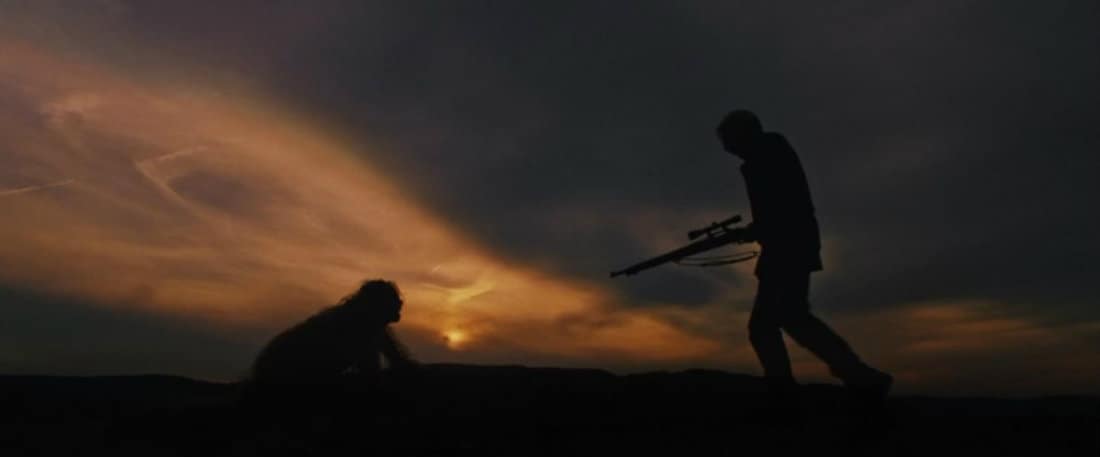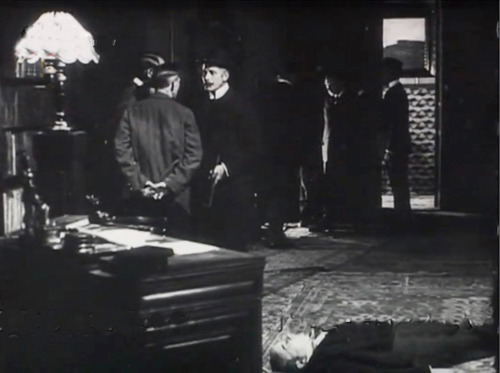Netflix continues to get into the short film game, an area that seems perfect for the streaming service, with Paul Thomas Anderson‘s Anima. Sorry, he’s calling it a “one-reeler,” even though it’s just over the length of a single-reel film. Really, it’s a long-form music video, albeit one that links three songs by Thom Yorke from his solo album of the same name: “Not the News,” “Traffic,” and “Dawn Chorus.” Anima follows one romantic narrative thread, though, with Yorke himself playing the protagonist as he attempts to connect with a woman (his real-life partner, Dajana Roncione) he sees on the train.
I’ve never done a Movies to Watch After… curation for a short film, but Anima is such an interesting release and is inspired enough by some classic films while reminding me of some other recent works that I had to give it a try. But because it’s a short, I’ll keep this list brief compared to others.
Suspiria (2018)

Anderson directing and Yorke performing is already a team-up to dream of, but another name is just as important to what’s on screen in Anima: Damien Jalet. The choreographer designed the mechanical modern dance that Yorke and the background players execute brilliantly in Anima. This is Anderson’s first time working with Jalet, but the filmmaker is thanked in the credits of Luca Guadagnino’s recent Suspiria remake. The horror film that happens to feature disturbing dance sequences choreographed by Jalet and a haunting score by Yorke.
Pina (2011) and The Ferryman (2016)

If you’re interested in seeing more of Jalet’s work, Gilles Delmas’ documentary The Ferryman showcases the dancer and choreographer’s work on stage and in between performances presents a fictional narrative featuring Jalet as the titular antlered character. This connective material, which is scored by Ryuichi Sakamoto (The Revenant) and partly created by artist Marina Abramovic, brings the dancers outside into nature and to various locations around the world. It reminds me, as does the choreographed action of Anima, of the mix of stage and on-location dance sequences in Wim Wenders’ 3D documentary Pina, a tribute to Pina Bausch. To bring things around, Bausch inspired some of Jalet’s work in Suspiria, in which Tilda Swinton plays a character said to be modeled after both Bausch and Abramovic.
Royal Wedding (1951)

One sequence in Anima features Yorke and other dancers seemingly crawling across a floor that occasional changes its slope. They climb or fall depending on steepness, but we never see the change in the platform they’re on, only what it does to the men. The tilted-stage effect employed by Anderson, as Variety‘s Chris Willman acknowledges, is something Fred Astaire would appreciate. The dance film icon made the gimmick famous with his ceiling routine for “You’re All the World to Me” in Royal Wedding. For that, a vertically revolving room set was used, so it’s more elaborate and more impressive if you don’t know how it was done.
Modern Times (1936)

Among the silent comedians Yorke has been compared to in Anima, Charlie Chaplin is obviously one. While he’s not the most fitting, there is something about the new short that’s akin to one of Chaplin’s late classics: Modern Times. Both movies involve a mechanical choreography representing a kind of worker’s dance. For Anima, it’s that Yorke’s character is part of the day-to-day rat race, while Chaplin is literally a cog in the machine in the most famous sequence of his industrial satire. Unlike the next two relevant silent pictures on this list, Modern Times is more romantic and yet also ends with uncertainty for its pairing as they depart together, Yorke’s experience possibly only a dream and Chaplin’s a kind of flight from reality as well.
Steamboat Bill Jr. (1928)

More than Charlie Chaplin, Buster Keaton is the silent comedy star who most clearly inspired Yorke’s movements in Anima. Anderson even admits in Willman’s Variety interview, “I just kept saying, ‘More Buster Keaton, more Buster Keaton!'” The one Keaton that dominated my mind while watching Anima also happens to be my favorite of his features. Steamboat Bill Jr. is a bit of a disaster movie that throws Keaton’s character into a hurricane situation. There’s a bit where he keeps trying to walk against the powerful winds, tilting his body just like Yorke and his fellow dancers appear to be doing in the second act of Anima. And while you’re here, you’ll get to see what’s probably Keaton’s most iconic stunt ever in which the facade of a house falls and fortunately he’s standing in just the right place that it doesn’t crush him.
Manhandled (1924)

In my continued attempt to recognize Harold Lloyd as a relatively forgotten silent comedian, at least compared to more mainstream attention on Chaplin and Keaton, I was going to highlight his 1928 classic Speedy, in which there’s a slapstick subway sequence. But then I thought I’d change things up with something even more obscure. Since Anima‘s title refers to the feminine side of a man, I think it was only fair to include a female comedian anyway. Manhandled is primarily a drama but occasionally it shows off star Gloria Swanson‘s underrated knack for silent comedy. The movie opens with one such sequence not just dealing with her tiredly attempting to make do without a seat on an overcrowded train but also having her own sort of difficulty even entering through the station’s turnstiles.
Bonus: Daydreaming (2016), Present Tense (2016), and The Numbers (2016)

Anima isn’t Paul Thomas Anderson’s first collaboration with Thom Yorke. The former directed the latter in a trio of music videos for Yorke’s band, Radiohead, off their 2016 album A Moon Shaped Pool. While music videos are considered by many to be a format of film, there’s not much to these three compared with Anderson’s new effort for Yorke’s solo project. The video for “Daydreaming” merely follows the singer through doorways to various new locations, not even performing dance moves or stunts. And the videos for “Present Tense” and “The Numbers” just feature Yorke and regular Anderson film scorer Jonny Greenwood sitting and playing the songs.
The post Watch Paul Thomas Anderson’s ‘Anima,’ Then Watch These Movies appeared first on Film School Rejects.




































